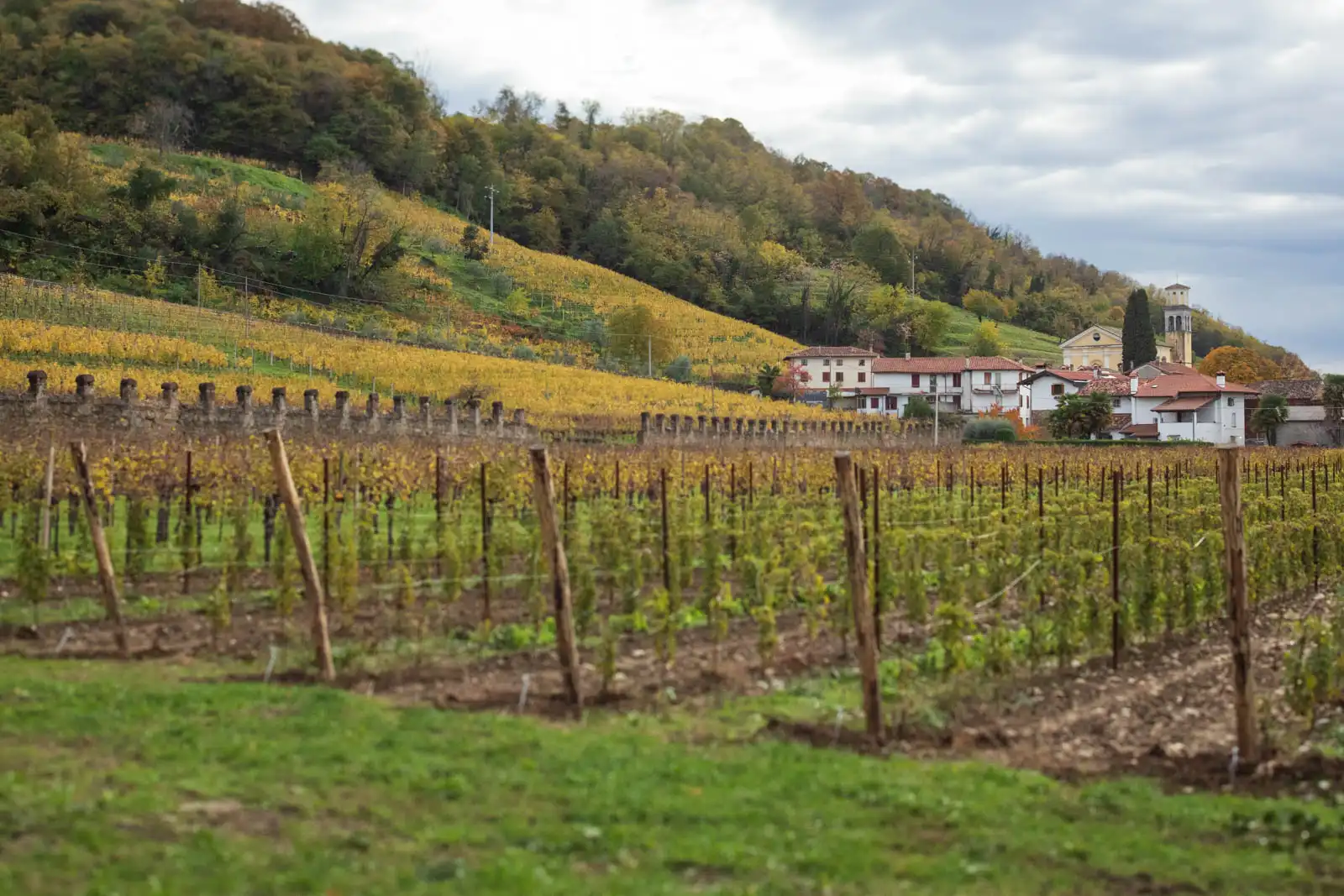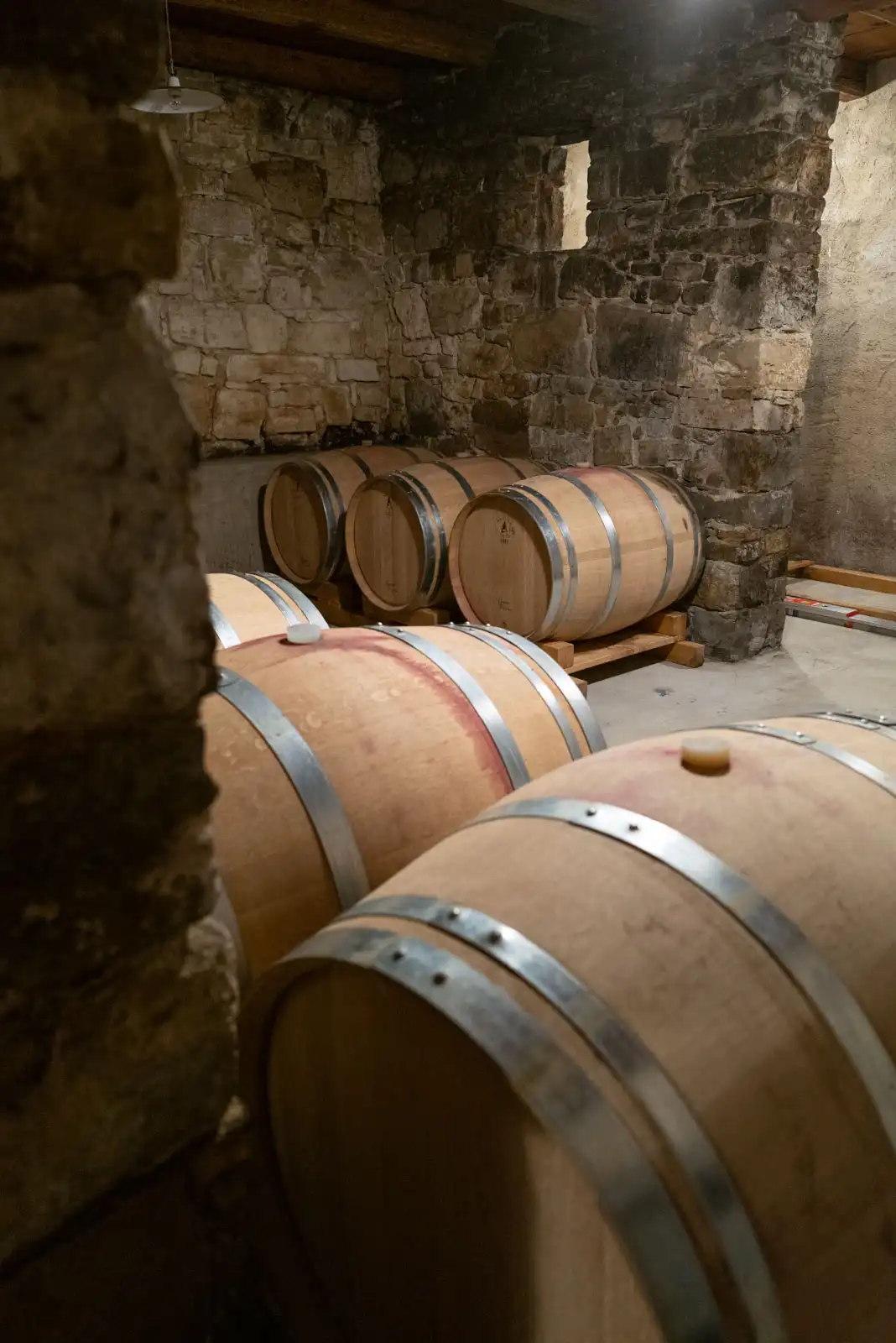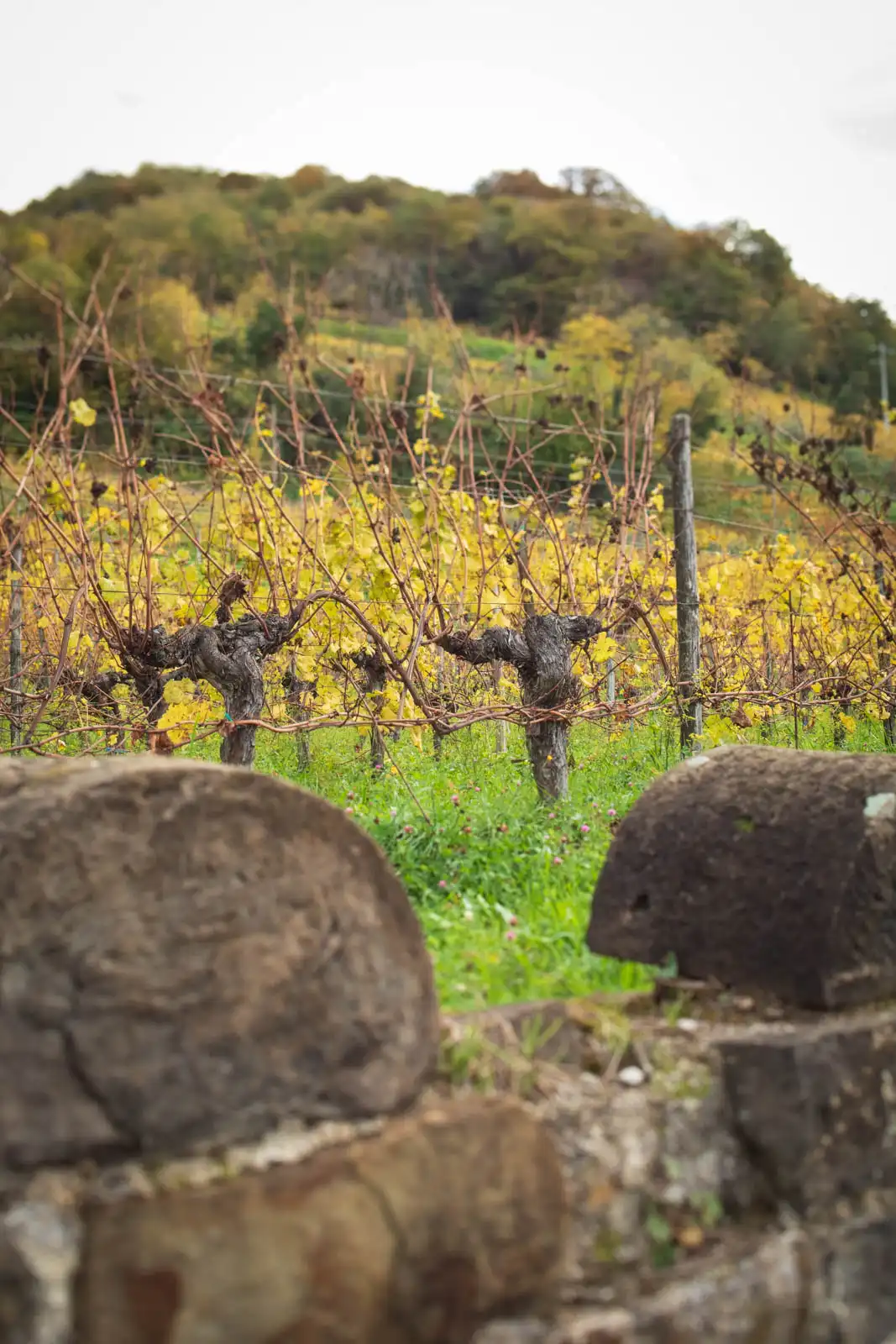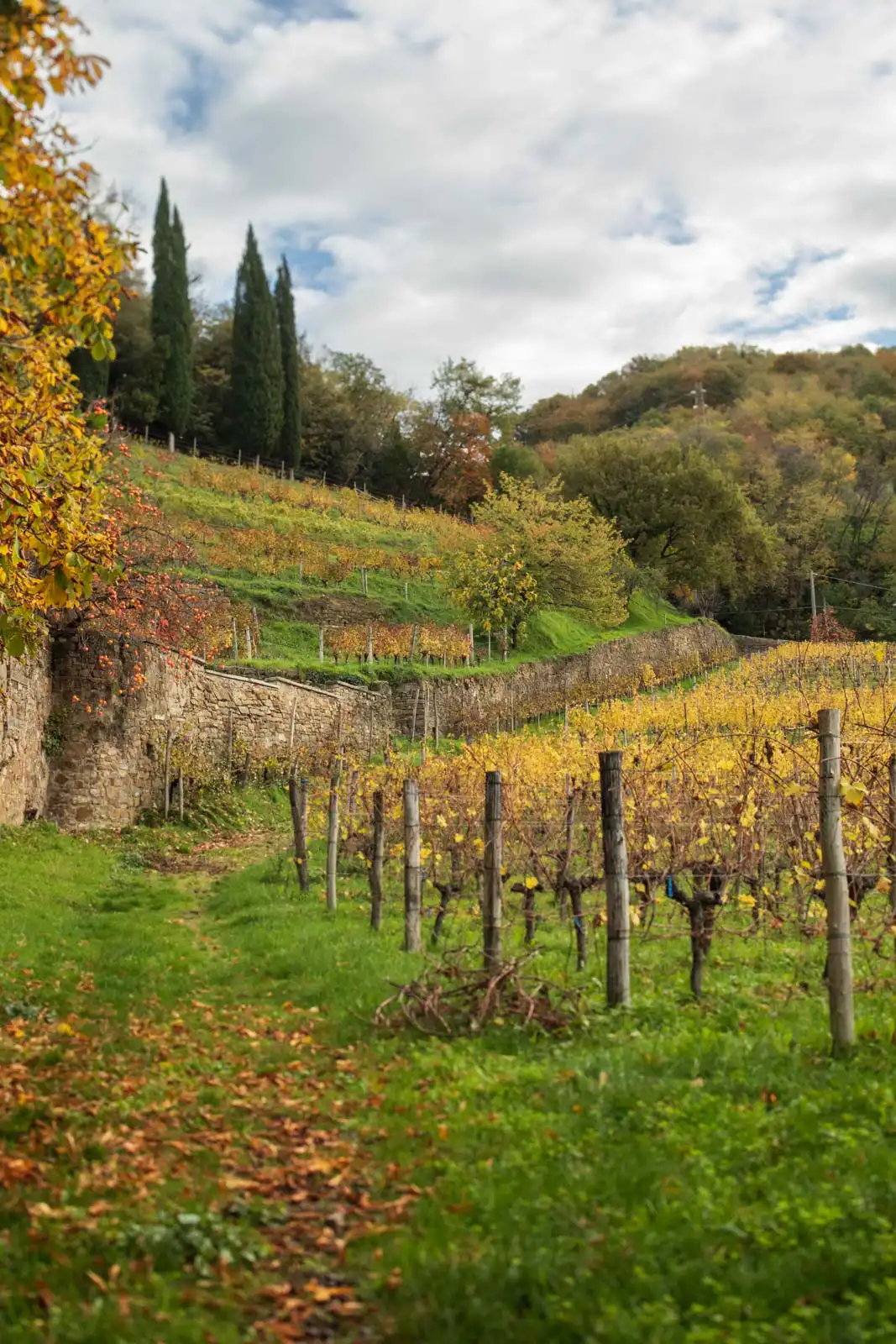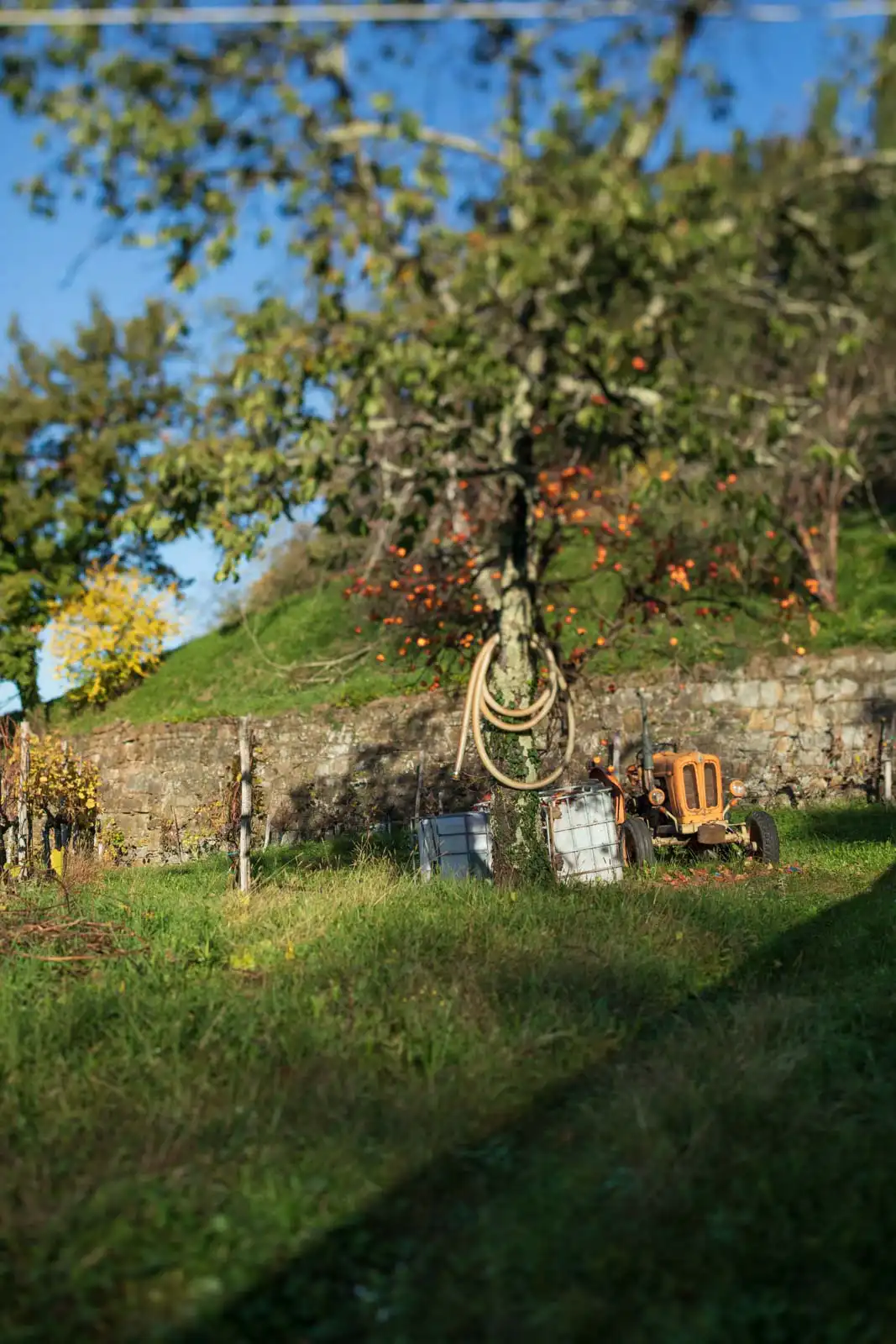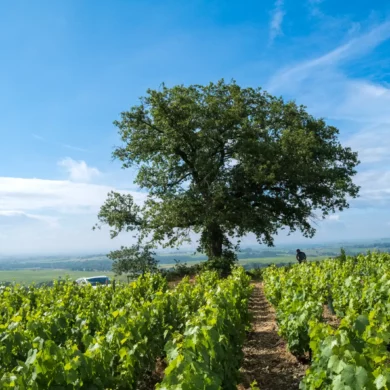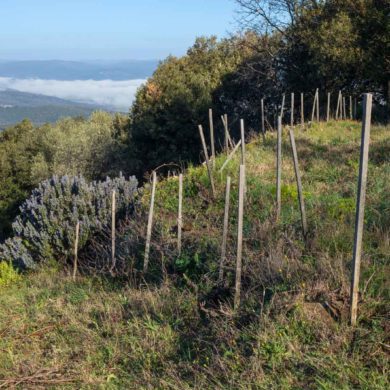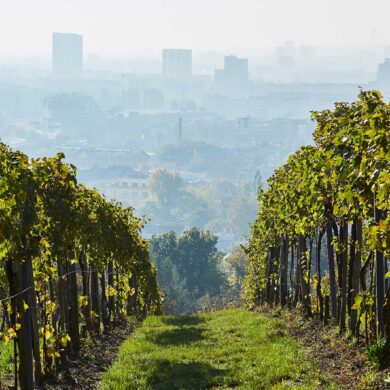On an overcast morning in November, I drove a few miles from Capriva del Friuli to the small village of Brazzano, the heart of the Collio wine-growing region of Friuli, Italy. It was a Sunday, a day to largely avoid appointments, so I opted to photograph as many vineyards as possible, especially those of Borgo del Tiglio, a small family winery that has earned the highest regards from Italian wine obsessives. The next day, well after dark, I was set to meet Mattia Manferrari at the winery’s small facility at the foot of Mount Quarin, so I knew this was likely my only chance to capture images of their famous vineyard, Ronco della Chiesa.
The only problem was, I didn’t know where Ronco della Chiesa was. The only thing more complicated than Collio’s soils is figuring out who owns what, so an official vineyard map does not yet exist. I had assumed based on the vineyard’s name (Terraced Slope of the Church) and the many images of Borgo del Tiglio online, that the vineyard lay behind an ancient crenelated wall that lines the road next to the winery. On the hill above this vineyard? A church. Must be it.
But then again, there was this even-steeper vineyard tucked in the back, which seemed to flow like a cascade toward the front door of Brazzano’s pale yellow Chiesa di San Lorenzo. Which vineyard? Which church? Camera in hand, bird song filling my ears, I wandered along the road and delighted in the scene before me, which felt as Burgundian as Italy gets.
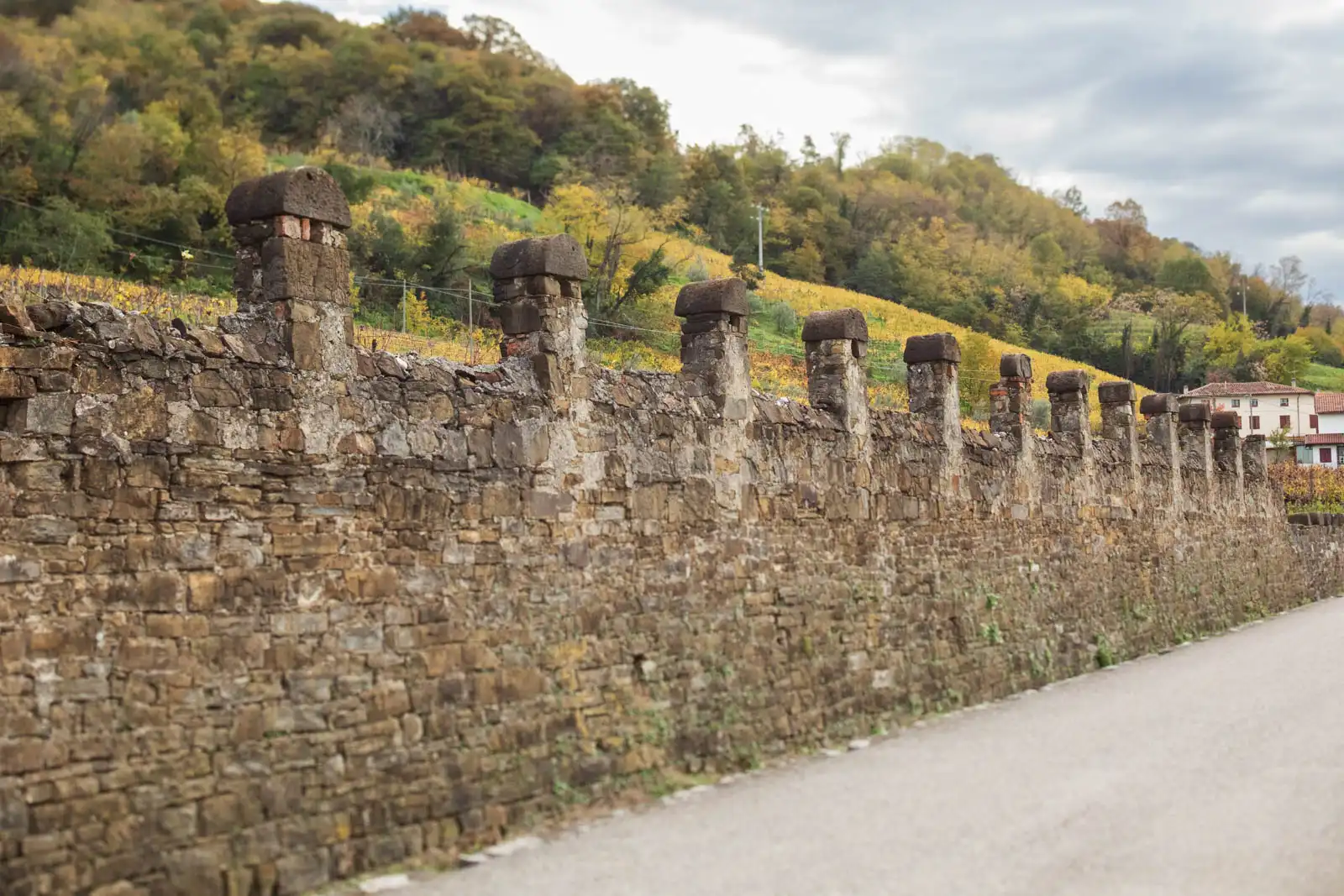
A Craftsman of the Highest Order
As I adjusted my camera settings, I suddenly felt compelled to look up. Driving by me, stone-faced yet familiar from all the images I had seen of him in my research, was Nicola Manferrari — the heart, soul and backbone of Borgo del Tiglio — heading out for perhaps a Sunday errand.
“We value the artisan work behind the wine.”
Mattia Manferrari
Borgo del Tiglio
Nicola is not only Mattia’s father and the founder of Borgo del Tiglio, but an icon of Italian wine. For more than 40 years, he has presided over his family’s vines, taking his winemaking cues from Champagne and Burgundy and interpreting them beautifully into a Friulian context. “We value the artisan work behind the wine,” his son would later tell me, an apt way of underscoring what’s special about the estate.
Manferrari’s Chardonnay and Sauvignon Blanc wines leave little doubt of his skill, but it is the Tocai Friulano from Ronco della Chiesa that carries perhaps the most interesting narrative. I wanted to hear about it firsthand, but I was a bit nervous about the visit. Nicola is a no-nonsense fellow, and we were scheduled for 5:30pm on my last night in Italy. Talk about an unfavorable time slot.
“With Nicola, you can show up for a wine-tasting appointment, stay for twenty minutes, and then it’s time to go,” wrote Master Sommelier Bobby Stuckey in the book he co-authored with Lachlan Mackinnon-Patteron and Mereditch Erickson, Friuli Food and Wine. “Or you might receive an in-depth tutorial about pruning while on an exhaustive tour of his vineyard site, followed by a vertical tasting of thirty-some vintages. You never really know what kind of visit you’re going to get.”
Being a control freak, that last part — not knowing what to expect — was on my mind. It’ll be fine, I told myself as Nicola drove away. My appointment, after all, was with Mattia, who speaks English and who is gradually gaining responsibilities at the winery.
However, on the morning of my visit, I learned that Mattia had tested positive for COVID-19. We were welcome to come by, but Nicola only speaks Italian and French. My travel companion and guide, Lavinia Zamaro from the Collio Consorzio, would need to function as an interpreter too, for the only Italian I know is a dialect known as Duolingish (e.g. L’animale rimane nello zoo?). It is a dialect that’ll do for everyday interactions, but it is not the best for deep dives on soil pedology, plant physiology or enology.
Sure enough, when we arrived Monday night, Nicola seemed both busy and surprised to see us.
“Parla franciase?” he asked me, after my colleague explained who I was.
“No. Solo un po’ italiano.”
His face didn’t move. This would be one of those 20-minute appointments Bobby referred to.
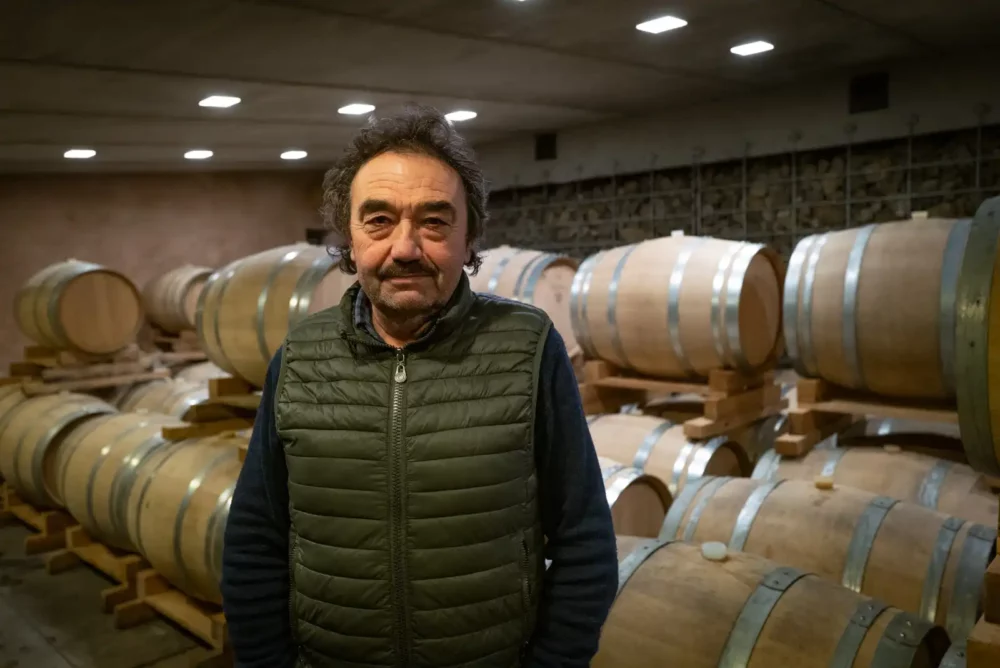
Manferrari, however, was quite generous with his time. We walked through his immaculately clean, mildly humid cellar and he spoke about his cellar practices, interrupted for a moment by the church bells of Chiesa di San Lorenzo as they peeled through the corridors. When it came to his winemaking techniques, he was direct, matter of fact, and even a bit mathematical. But regarding terroir, he was more mystic: “It is about nature deciding what we need to do. We are not magicians. We are not cooks. We cannot invent what we do not have because we are limited to what nature provides.”
There wasn’t much else to be said on terroir, despite me pressing. Next topic …
The Reluctant Pharmacist Finds His Calling
“I was at the same time a child of scientific teachings and an orphan of technology.”
Nicola Manferrari
from his writings on Borgo del Tiglio’s website
“My father was an outsider,” his son Mattia told me when we connected via video conference a few weeks later. I had asked about Borgo del Tiglio’s beginnings in the early 1980s. The family business was actually a pharmacy in the nearby border city of Gorizia that not only served Italians, but also Yugoslavians who would cross the Iron Curtain for better access to medication. Despite the stability and profitability of the business, Nicola’s heart was never in it. Meanwhile, his father, a manufacturer, took up winemaking in retirement as a “fun project” and a way to unite the family’s various land holdings. But when he passed away in 1981, there was no one to continue his work.
“My father was very fond of this activity [working in the vineyards], and so he very swiftly fired himself from the pharmacy,” Mattia said.
In one of his writings, Nicola recalls that it was his mother who fired him after he told her of his desire to be a winemaker from a phone booth on the side of the road. She thought he was bluffing, but after a few weeks, she realized he wasn’t. So she hired a lawyer to “find a legal technicality that would wrench me back out of my new vocation.” The problem was, that lawyer was also a winemaker, and he not only understood Manferrari’s ambition, he helped draft a favorable leasing agreement for the family’s farmhouse to be used as the winery.
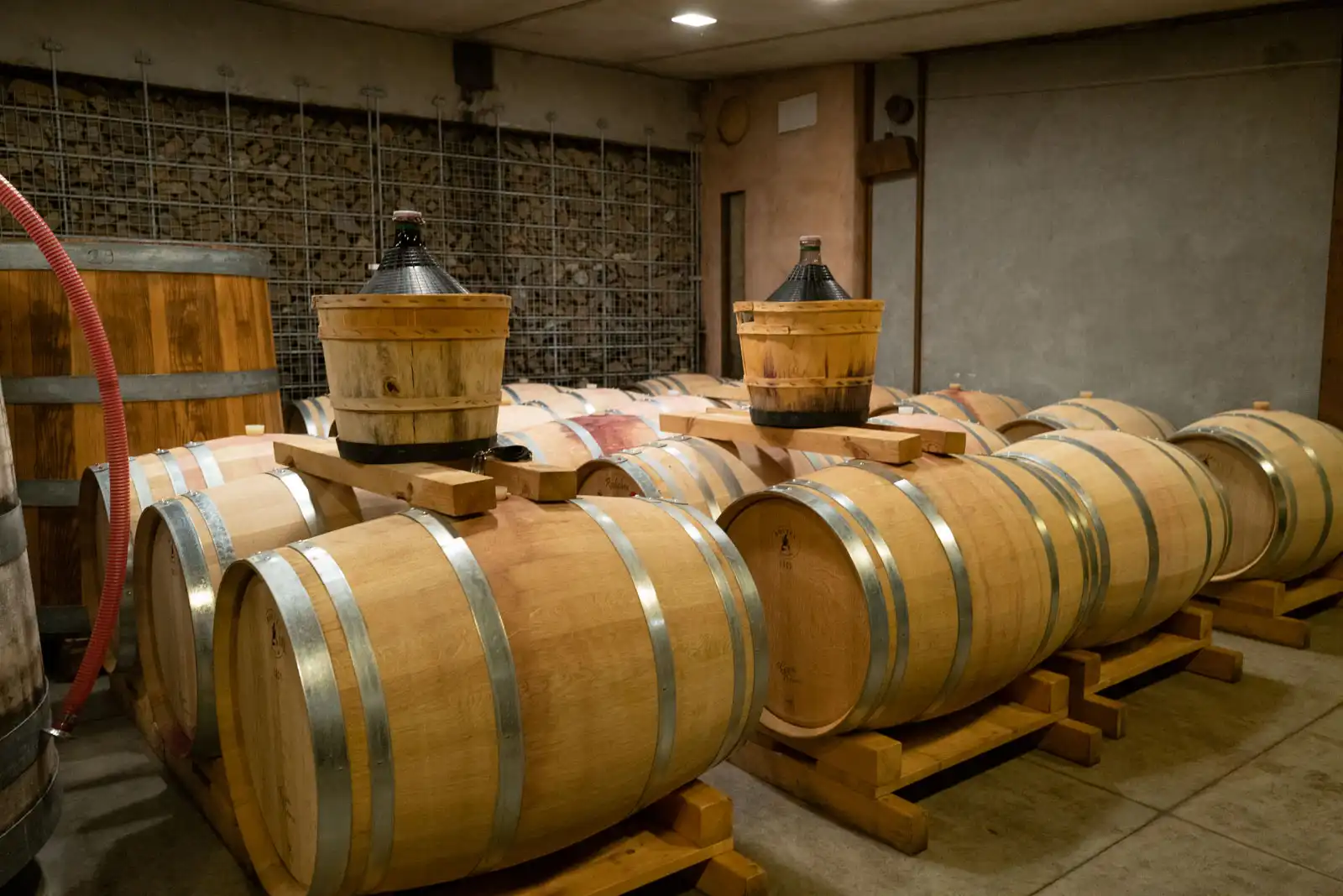
After buying out his mother and aunt, Nicola’s capital was dwindled and his operation was modest, but he had gumption and a lack of burden to familial tradition. They were pharmacists and manufacturers, not vignaioli. Without that ancestral shadow hovering over his shoulder, he could do whatever he wanted. But he had to work with Tocai Friulano. That’s what was planted, and ripping them out for something new wasn’t an option. (Nor, does it seem, was it ever something he entertained).
So rather than studying his neighbors’ techniques in the cellar, he taught himself French and started studying French winemaking technique and vine management. It validated much of what he already observed and believed about his vines. He would also travel to France and learn from winemakers in Bordeaux, Burgundy and, in particular, Champagne. There he was inspired by the region’s gentle pressing techniques to preserve acidity and the practice of excluding the final 20% of the must, which tends to lose elegance because the potassium in the skins binds to the acidity, weighing the wine down.
But where Manferrari raised the most eyebrows in his neighborhood was in the vineyard, where his colleagues saw him reducing yields, embracing older vines, allowing grasses to grow, and avoiding chemical pesticides and fertilizers at every turn. While that might sound old school, at the time, Friuli’s vineyards were heading the other way, toward modern conformity and international taste.
“He always told me the story about his vineyard neighbor who started yelling at him because he was doing a bad job of pruning,” Mattia recalled. “In his opinion, he was just cutting too much and not leaving enough on the plants.”
But Manferrari was building a long-term legacy for Borgo del Tiglio, and soon enough, the wine world would take notice. With success came the opportunity to expand his vineyard holdings: into Malvasia Istriana, Chardonnay, Sauvignon Blanc and Merlot, as well as a little bit of Riesling and Cabernet Sauvignon for his blended wines.
I asked Mattia why so many great Italian winemakers came to their profession with pharmacy work on their resumé. After all, Clementi Santi and the Salvioni family in Montalcino, as well as Giuseppe Benanti in Sicily and a handful of other notable producers, were all pharmacists. He paused, probably wondering whether his father ever really was a pharmacist at heart. But maybe there was something drawn from the experience.
“I think it is a love of precision,” Mattia speculated. “You have to be good at executing, being precise, being clean, and doing the right thing at the right time. All of that is helped by such a background.”
Beneath Ronco della Chiesa
After an hour of photographing the vineyards, I went to meet sommelier Mitja Sirk of La Subida. He quickly straightened out for me which vineyard was which, and I soon realized that I mostly photographed Italo e Bruno, a Malvasia vineyard owned by Borgo del Tiglio which takes its name from the first names of the previous landowners. After breakfast on my last day, hours before meeting Nicola in the dark of night, I parked at Chiesa di San Lorenzo and walked up the road behind the winery.
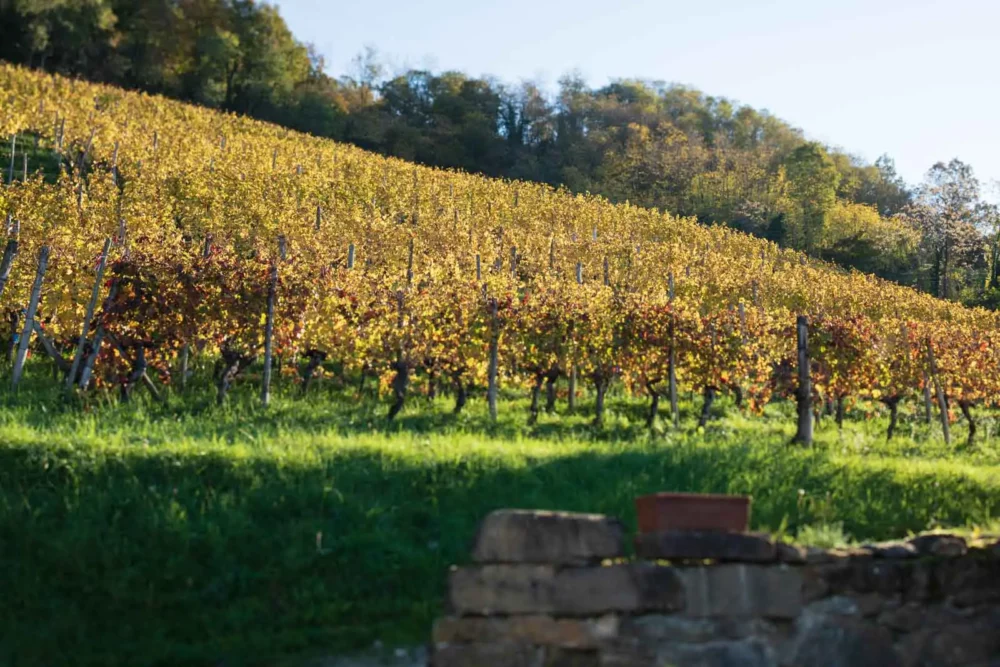
“[Manferrari’s] Ronco della Chiesa vineyard is considered the Montrachet of Tocai Friulano,” noted Bobby Stuckey in his aforementioned book. But walking beneath its steeply pitched riot of golds, reds and greens in the low-hanging November sun, I was reminded of something far more intimate than that boulevard of vines in Burgundy. Hemmed in by forest at the top and a church at the bottom, its steepness would discourage all but the most intrepid of winemakers.
“If you have to wait 50 years to have a good, valuable vine, well then you have to wait 1 million years to have valuable soil again.”
Mattia Manferrari
Of course, its what comes from the vines that underscores the comparison. Like Montrachet, you wouldn’t want to enjoy a bottle of Ronco della Chiesa Friulano too soon. It needs a handful of years in the bottle to reveal its character, which eventually emerges like a dose of lush apples, orange tea and a bouquet of flowers. It’s silken texture and fullness of flavor elevate it into the upper ranks of Friulian wine.
Much of this character comes from the age of the vines, which are estimated to be 70 years old at a minimum. If the theory that vines and soil build memory together over time were to hold true, than the unperturbed continuity of Ronco della Chiesa may be its biggest badge of honor.
“My father had the courage to preserve it the way it was,” Mattia Manferrari told me. “Because other people [at the time] would have redone it to make it more comfortable … We strongly believe in the uniqueness of our terroir. But it has to sustain itself.”
And it has to be protected. As he pointed out, excavating a vineyard to make it flatter — not to mention nuking it with chemicals — diminishes the original character of the place. Once soil is destroyed, Mattia noted, there is no going back. “If you have to wait 50 years to have a good, valuable vine, well then you have to wait 1 million years to have valuable soil again.”
And Into Italo e Bruno
Up Via San Giorgio from Ronco della Chiesa, I found an opening in the clos-like wall of Italo e Bruno. Triangular shaped and only consisting of about 30 rows of vines, this mostly-Malvasia Istriana vineyard has the more Burgundian visage than Ronco della Chiesa. A persimmon tree at its apex held onto its late-harvest fruit and an old tractor, straight out of a children’s book, seemed to smile from its shade.
Something about the vineyard made me feel like I ought to be respectful, as though this were a church where pictures weren’t allowed. As if to underscore this, the chiesa’s bells rang out again. I returned to my car and drove off to the day’s first appointment, knowing I’d return to the winery after nightfall.
Despite being lower in elevation, less steep and fully enclosed by stone walls, Italo e Bruno is a cooler site, according to Manferrari. Each vineyard has roughly the same ponca soil, they both face southwest, they both seize upon the climatic tension of the Alp-driven winds and the balmy Adriatic oozing its way over the plains. And each produces a single-vineyard, single variety wine. On paper, either plot should be able to produce Friuliano and Malvasia Istriana of distinction, and in fact, Borgo del Tiglio has some Malvasia on the hill of Ronco della Chiesa, and some Friulano growing in Italo e Bruno.
Yet in blind tastings, they can always identify these vines because they lack the distinction and concentration of their counterparts. Tocai Friulano belongs in Ronca della Chiesa. Malvasia Istriana belongs in Italo e Bruno.
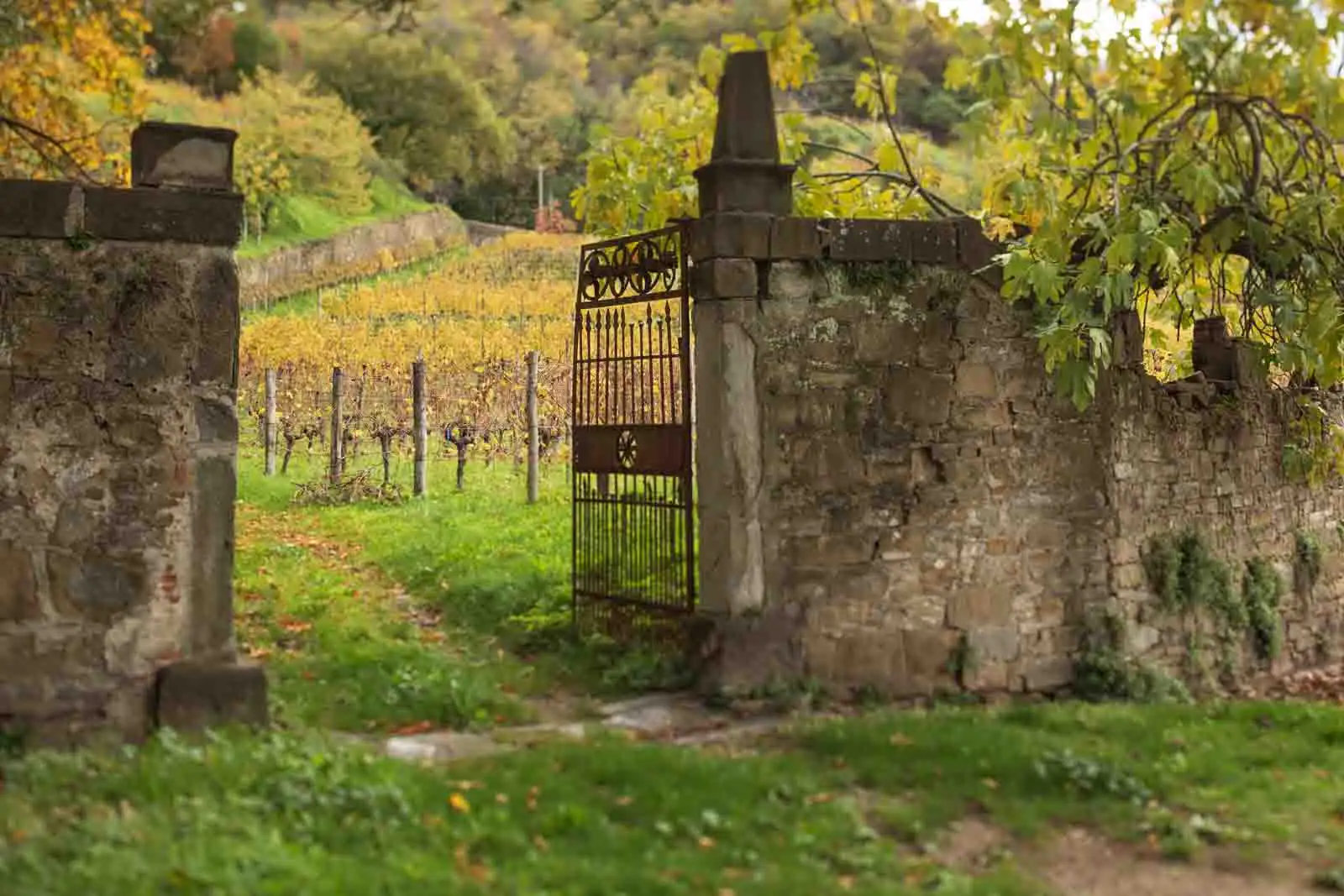
When I pressed Mattia for an explanation on this — and whether it had to do with roots and soil memory from each variety — he paused and thought carefully. “A grower has to accept how things are. There are so many interconnected things that come into play, it would be arrogant to try and explain it.”
And perhaps that’s what permeates these two sites the most — mystery. It was something I felt when I walked up to the threshold of the Italo e Bruno vineyard — an aura of contemplativeness that is often etched in frescos, stained glass, or in this case, very old vines. The Manferrari’s can explain anything in the cellar with extreme precision and confidence. In the vineyard, some things are left unexplained. And they guard it like the legacy of the entwine vines and soil they’ve always defended.
Map of Ronco della Chiesa and Italo e Bruno
2020 Borgo del Tiglio “Ronco della Chiesa” Collio Friulano
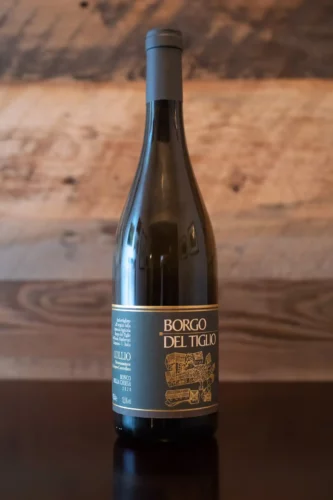 Collio DOC (Friuli-Venezia Giulia)
Collio DOC (Friuli-Venezia Giulia)
Grapes: Tocai Friulano (100%)
Alcohol: 13.5%
Opinion: ★★★★★ (out of five)
Food friendliness: Versatile
Value: A Little Pricey
A beginner might like … knowing that some white wines need age. When it comes to Friulano, we are not talking decades, but rather a good four to five years to allow the wine to settle into form. This vintage is still a little on the young side, with more subdued aromas and an eager finish. The solve? One day of rest after opening, then another glass. And what a beautiful wine this is: suggestive of bright and lush apples, orange tea, lovely floral aromas and a faint but necessary hint of toast.
A wine obsessive might like … the very same attributes, as discussions of aging white wine have far too often been limited to white Burgundy and little else. But in Friulano — especially this wine from one of the oldest and most perfectly situated parcels in the Collio — deserves to be explored in such a manner.
2020 Borgo del Tiglio “Italo e Bruno” Collio Malvasia
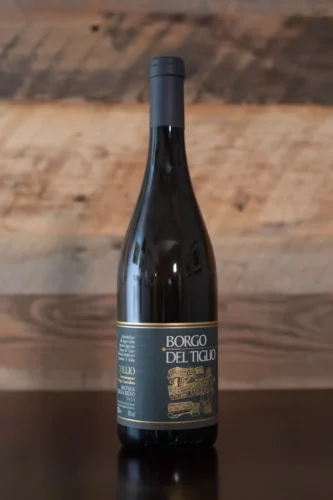 Collio DOC (Friuli-Venezia Giulia)
Collio DOC (Friuli-Venezia Giulia)
Grapes: Malvasia Istriana (100%)
Alcohol: 14%
Opinion: ★★★★ 3/4 (out of five)
Food friendliness: Versatile
Value: A Little Pricey
A beginner might like … how this bright and mineral white wine conveys depth and elegance. But like its neighbor, Ronca della Chiesa, the Italo e Bruno vineyard seems to yield fruit that requires a little patience. Your first sip right out of the bottle might not show much fruit, but trust me: it is there. Aeration and good stemware will help reveal its lovely aromas of lemon-like citrus, seaspray and evocative flowers, and its stone-fruit juiciness.
A wine obsessive might like … the minerality. Collio’s white wines often excel on the finish where a minerality sensation unifies the elements. This is often attributed to the ponca (aka Flysch) soil of the area, a layered cake of sandstone and marl that provides optimal drainage and which promotes deep digging by the roots. Italo e Bruno has a singing sensation of minerality that will have any connoisseur drawing comparisons from the wider world of fine wine. To have that on a canvas of Malvasia’s intense succulence makes it all the more special.
Like Our Style of Wine Review?
Be gone points and medium-plus this and that! We’ll always review wines with the perspective of why they matter. (And if they don’t, we don’t cover them).
Subscribe to Opening a Bottle to view all of our Wines to Admire wine reviews, unlock the Essential Winemakers of Italy and France, and view any of our live and recorded wine education classes. All for just $49/year.
Note: My trip to Friuli was part of a European Union-funded press trip to help educate wine professionals and media about the Collio DOC and its wines. I chose to extend my stay to better understand a select group of producers of my own choosing, Borgo del Tiglio included, and the consortium helped arrange such visits.
The two wines featured here were provided as samples upon this story pitch by the winery’s American importer. Learn more about our editorial policy.
